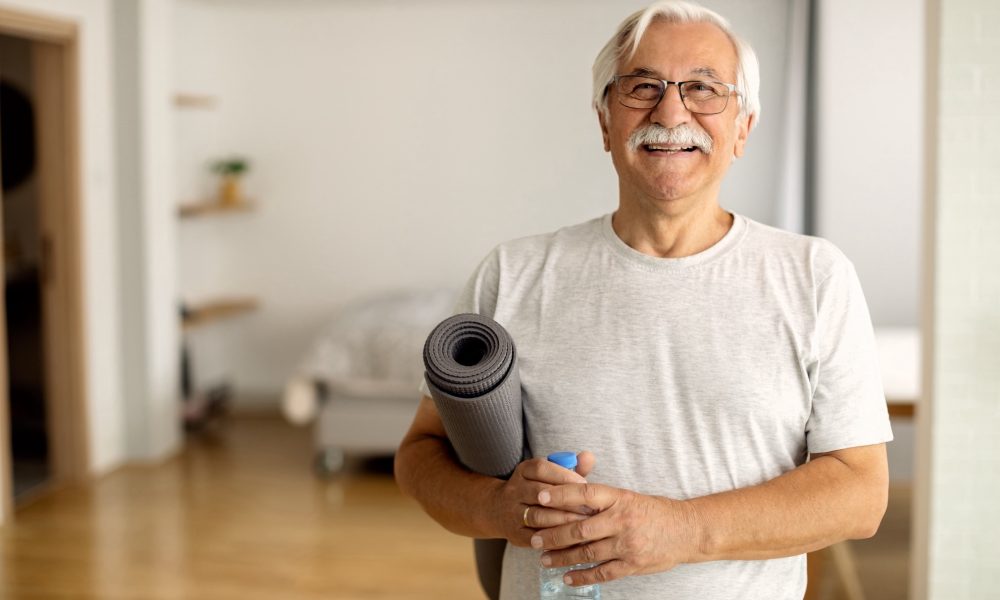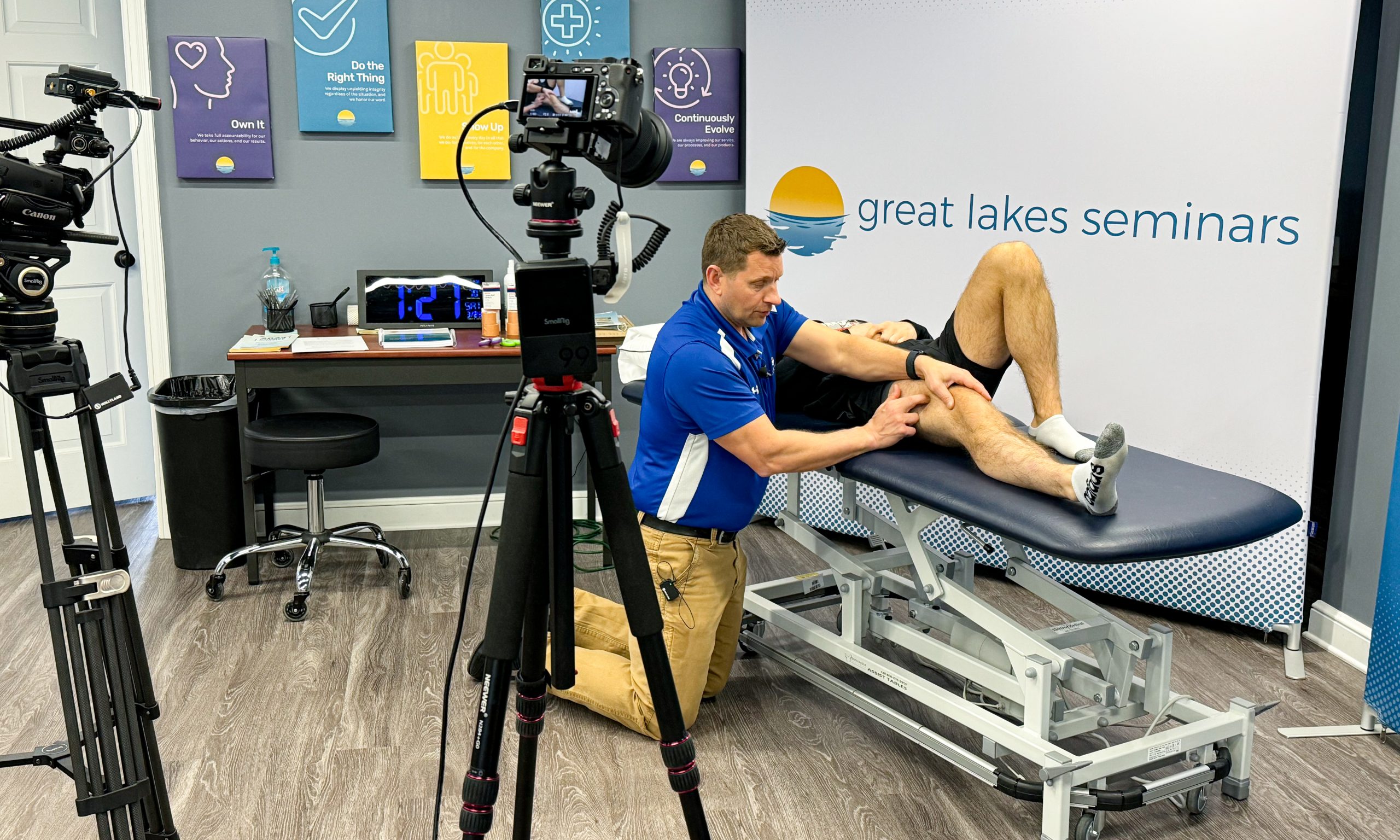5 Effective Exercises for Improving Balance in Elderly Patients

According to the CDC, there are roughly…
Balance is a crucial aspect of overall fitness, especially for elderly patients who may be at a higher risk of falls and injuries. Maintaining proper balance involves several key components, including muscular strength and endurance, proprioception, coordination with visual input, vestibular function, and reaction time. This article explores five effective exercises that target these different balance systems, providing patients with practical strategies to improve stability, reduce fall risk, and enhance their ability to safely navigate various environments. By understanding the underlying factors that contribute to balance and incorporating targeted training techniques, individuals can take an active role in optimizing their physical capabilities and maintaining independence as they age.
For elderly patients, balance involves several components, including:
Muscular Strength and Endurance
Assessing your muscular strength and endurance is an important aspect of overall fitness. One simple test you can try at home is the sit to stand exercise.
To perform this test, sit down on a chair or couch. Then, stand up and sit back down as many times as you can in 30 seconds. Be sure to keep your arms crossed in front of your chest to isolate the leg muscles.
This exercise targets the major muscle groups in your lower body, including the quadriceps, hamstrings, and glutes. Performing repeated sit to stands challenges both your muscular strength and endurance.
If your patients have any musculoskeletal issues, such as knee pain, they can modify the exercise by using their hands to push off the chair or couch. The key is to keep moving through the full range of motion as much as possible within the 30 seconds.
Tracking the sit to stand performance over time can provide insight into changes in your lower body strength and endurance. This simple test is a great way to monitor your progress as part of a comprehensive fitness routine.
Proprioception
Proprioception, the body’s ability to sense its own position and movements, plays a crucial role in maintaining balance and stability. Two effective exercises that challenge proprioception are the Tandem and SLS (Single Leg Stance) corner balance tests. Both of these exercises can be modified by altering visual and surface support conditions.
The Tandem balance test involves standing with one foot directly in front of the other, heel to toe. This narrow base of support requires the body to make constant adjustments to stay upright. Performing this test with eyes closed or on an unstable surface, such as a foam pad, further challenges proprioceptive abilities.
Similarly, the SLS corner balance test involves standing on one leg, which engages the core and lower body muscles to maintain balance.
Incorporating these balance exercises with variations in visual and surface conditions can help improve overall proprioceptive awareness and control. This, in turn, can enhance an individual’s ability to navigate various environments and reduce the risk of falls or injuries.
Coordination and Visual Input
Maintaining dynamic balance and visual focus while engaged in dual tasks can be a useful skill to develop. Coordinating body movements with visual processing challenges the brain to work efficiently across multiple domains.
Activities like playing “I Spy” while navigating an obstacle course or walking require the participant to divide attention between observing their environment and controlling their physical actions. This type of dual tasking can improve overall coordination, as the brain learns to process visual information and motor commands concurrently.
Practicing coordination with visual input can have applications in sports, physical therapy, and everyday life. By challenging the mind to multitask in a controlled setting, individuals can build the neural pathways necessary for smooth, efficient movement paired with heightened environmental awareness.
Vestibular Function
The vestibular system plays a crucial role in maintaining balance and gaze stabilization. When this system is disrupted, individuals may experience dizziness, vertigo, and difficulty focusing their vision during head movements. Gaze stabilization exercises are an effective way to retrain the vestibular system and improve visual acuity during dynamic head movements.
These exercises involve tracking a fixed target while moving the head horizontally, vertically, or diagonally. This challenges the vestibular-ocular reflex, which normally works to keep the eyes fixed on a target despite head movements. By practicing these exercises, individuals can strengthen the neural pathways responsible for this reflex, leading to improved gaze stability and reduced symptoms of vestibular dysfunction.
Gaze stabilization exercises can be performed under the guidance of a physical therapist or occupational therapist who specializes in vestibular rehabilitation. Consistent practice of these exercises, combined with other vestibular therapy techniques, can significantly improve an individual’s ability to navigate their environment with confidence and reduced risk of falls or accidents.
Reaction Time
The ability to quickly react to external perturbations is a crucial skill for athletes and active individuals. It is also just as important for our patients with balance impairments. External perturbation training, such as balance stone exercises, BOSU taps, and Blaze Pod drills, can help enhance reaction time and improve overall athletic performance.
These training modalities challenge the body’s proprioceptive system, forcing the neuromuscular system to rapidly adapt and respond to unexpected stimuli. By regularly incorporating these exercises into a training regimen, individuals can build the neural pathways necessary for quicker reflexes and more efficient movement patterns.
Mastering the techniques of external perturbation training can translate to a better ability to control your center of gravity within your base of support to prevent a fall. It will improve weight shifting/muscle speed, allowing them to quickly change their base of support when they lose balance.
Closing Thoughts: Leading Physical Therapy into the Future
In conclusion, maintaining balance is a critical component of overall fitness, especially for elderly patients. The key factors involved in balance include muscular strength and endurance, proprioception, coordination with visual input, vestibular function, and reaction time. By incorporating targeted exercises that challenge these different balance systems, patients can improve their stability, reduce the risk of falls, and enhance their ability to safely navigate various environments. Regularly monitoring progress through simple tests like the sit-to-stand exercise can provide valuable insights to guide an effective, personalized balance training program. Empowering patients to take an active role in improving their balance can lead to increased independence, confidence, and quality of life.
Questions? Check out these FAQs!
Balance training helps improve stability, strength, and coordination — all of which reduce the risk of falls and injuries in elderly patients. It also supports confidence and independence in daily movement.
Some of the most effective balance exercises for elderly patients include sit-to-stand, tandem stance, single-leg stance, gaze stabilization drills, and reaction time training using tools like BOSU balls or Blaze Pods.
Elderly patients should perform balance exercises 2–3 times per week. Consistency is key to improving strength, proprioception, and coordination over time.
Start with stable surfaces and eyes open, then gradually increase difficulty by adding unstable surfaces, reducing visual input, or including dual-task activities — always within the patient’s tolerance.
Simple functional tests like the 30-second sit-to-stand test are great for tracking progress. Documenting changes in repetitions, stability, and endurance helps guide balance program adjustments.
Share this article:


